-
Ancient Mesopotamia occupied the area between the Tigris and Euphrates Rivers (modern Iraq). c. 3500–400 B.C.E.
-
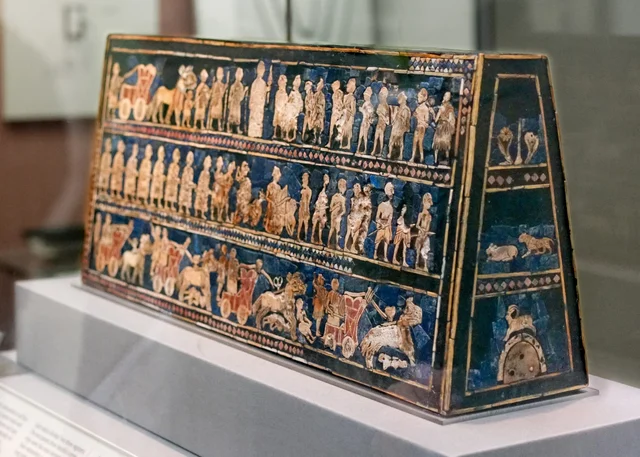 In Sumerian, The Standard of Ur, it is shaped rectangularly and it has some scenes into it of violence and kingship, the scenes in the Standard of Ur shows armies capturing and in slavering the enemies, which they are also naked, the one in the top shows the king telling the people on the right that they are slaves for the Sumerian, since they have lost the battle/war.
In Sumerian, The Standard of Ur, it is shaped rectangularly and it has some scenes into it of violence and kingship, the scenes in the Standard of Ur shows armies capturing and in slavering the enemies, which they are also naked, the one in the top shows the king telling the people on the right that they are slaves for the Sumerian, since they have lost the battle/war. -
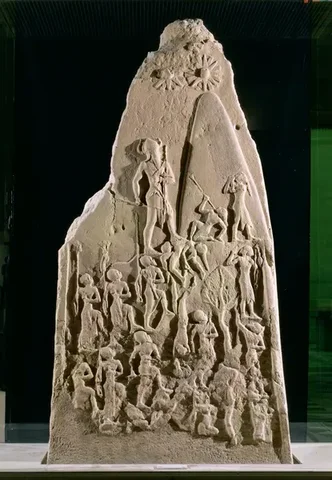 In Akkadian, The Victory Stele of Naram-Sin is the victory of Akkadian defeating the Lullubi Mountain people, in the 12th century B.C.E, Naram-Sin is a god and a king, he was the one that claimed divinity for himself, his crown has bull horns in them, which shows power, you can see him spearing the neck of one of the people from the Lullubi Mountains, and they are frightened and they are retreating, which make them cowards.
In Akkadian, The Victory Stele of Naram-Sin is the victory of Akkadian defeating the Lullubi Mountain people, in the 12th century B.C.E, Naram-Sin is a god and a king, he was the one that claimed divinity for himself, his crown has bull horns in them, which shows power, you can see him spearing the neck of one of the people from the Lullubi Mountains, and they are frightened and they are retreating, which make them cowards. -
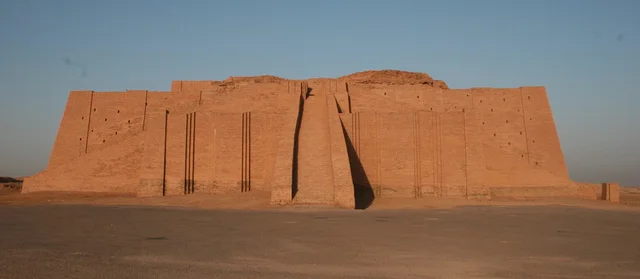 The Ziggurat was a invention of the Ancient Near East, its like an ancient Egyptian pyramid but not exactly, the ancient that is near the eastern of ziggurat has four sides which rise up to the realm of the gods, there is religious rituals to ancient near eastern cities at the Ziggurat, Ziggurats are found scattered around what is today, Iraq and Iran.
The Ziggurat was a invention of the Ancient Near East, its like an ancient Egyptian pyramid but not exactly, the ancient that is near the eastern of ziggurat has four sides which rise up to the realm of the gods, there is religious rituals to ancient near eastern cities at the Ziggurat, Ziggurats are found scattered around what is today, Iraq and Iran. -
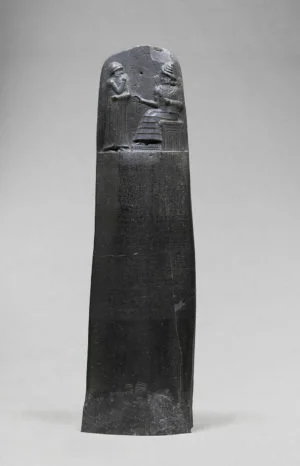 In this piece of art work from Babylonia, Stele is shown here receiving the Laws from the god shamash, Stele would mainly agree to these laws because the laws themselves come from the gods. We know that Shamash is a god himself from the way he is dressed. He has "4" lines in his hat, which makes him powerful, and that he is seated. An interesting thing is that the Hammurabi has a code written in Babylonia.
In this piece of art work from Babylonia, Stele is shown here receiving the Laws from the god shamash, Stele would mainly agree to these laws because the laws themselves come from the gods. We know that Shamash is a god himself from the way he is dressed. He has "4" lines in his hat, which makes him powerful, and that he is seated. An interesting thing is that the Hammurabi has a code written in Babylonia. -
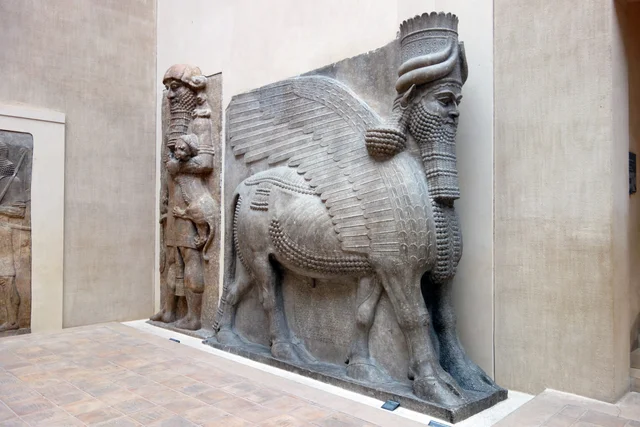 Lamassu from Assyrian, is a "mythical guardian spirit", it has the body of a Bull, has the wings of an eagle, and has the head of a human, the lamassu has a crown with 2 bull horns, which means its not that powerful but it kind of is a little. The lamassu has a angle from the front where it shows it standing and walking, at the front it is still like a guard, and the other side shows its walking, like its following or guiding you.
Lamassu from Assyrian, is a "mythical guardian spirit", it has the body of a Bull, has the wings of an eagle, and has the head of a human, the lamassu has a crown with 2 bull horns, which means its not that powerful but it kind of is a little. The lamassu has a angle from the front where it shows it standing and walking, at the front it is still like a guard, and the other side shows its walking, like its following or guiding you. -
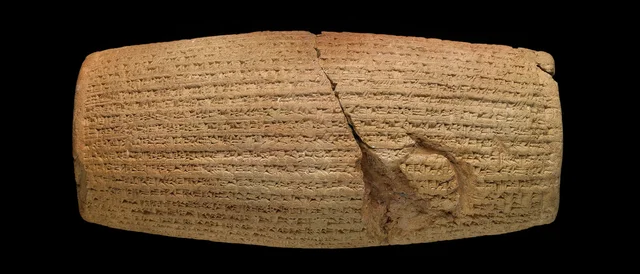 In Persia, The Cyrus Cylinder is one of the most famous objects that has ever lived in the ancient world, the cylinder is coded in Babylonia with words in it, the cylinder is also often referred to be the first ever bill of human rights, which encourages freedom of worship throughout the Persian Empire.
In Persia, The Cyrus Cylinder is one of the most famous objects that has ever lived in the ancient world, the cylinder is coded in Babylonia with words in it, the cylinder is also often referred to be the first ever bill of human rights, which encourages freedom of worship throughout the Persian Empire.
